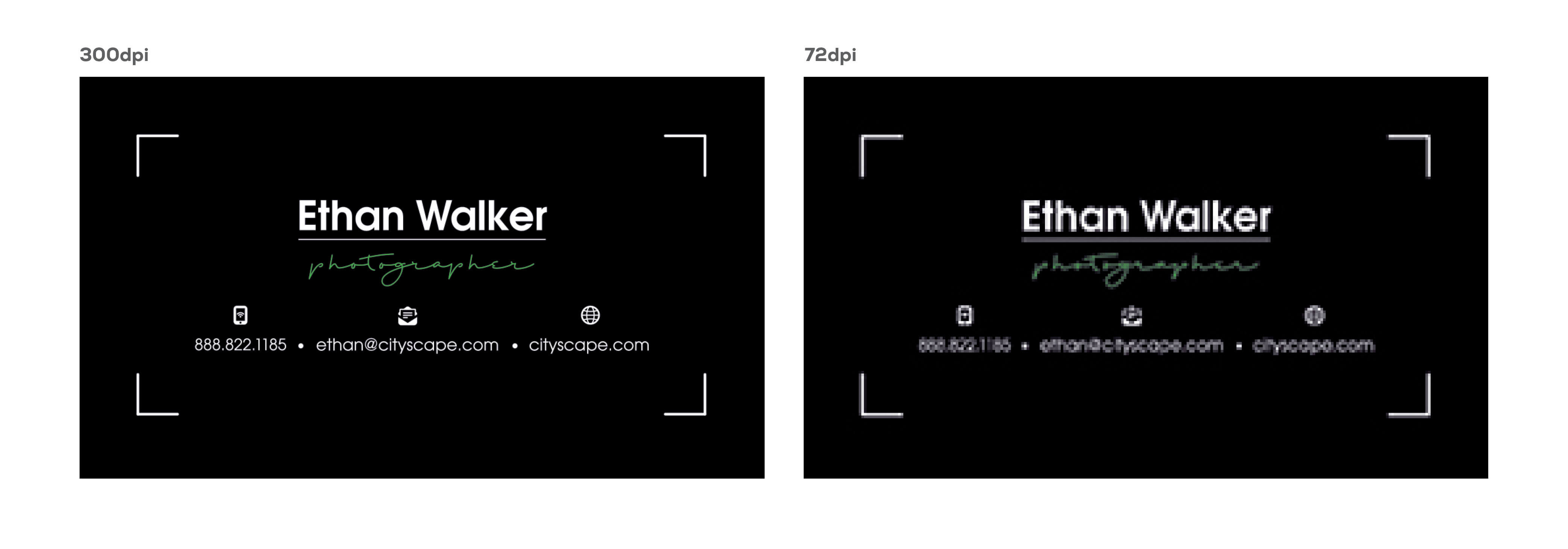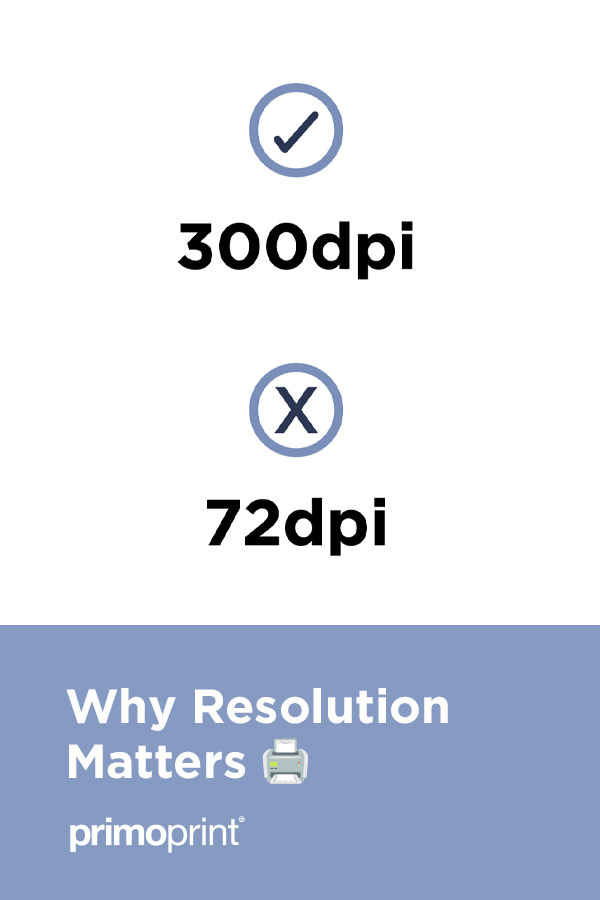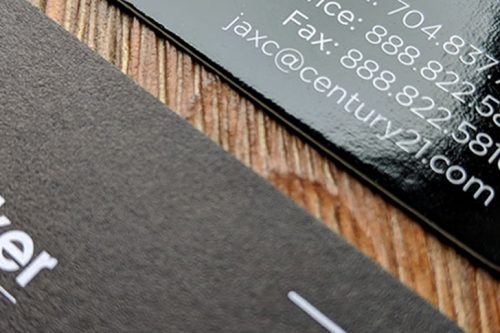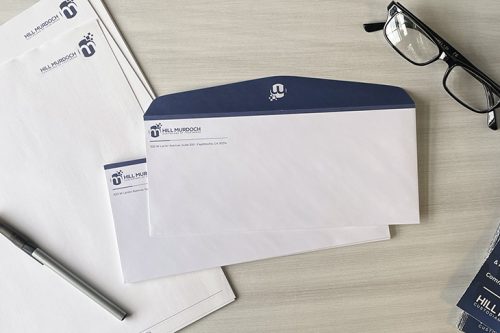What is DPI?
Have you ever zoomed into your monitor so close that images no longer look crisp, but rather a close-up of a Monet painting? When zoomed in, the images lose their visibility and turn into little dots of color. Those dots are called pixels. The more dots (or pixels) you have, the better the image will look when printed. This is also what we refer to when we say “dpi” or “dots per inch.”
What 300dpi Mean?
Why is a print resolution so important? A high-resolution file will have a higher number of dots, required for printing. 300dpi (dots per inch) is the resolution we recommend for print files. Files submitted to print that have a resolution lower than 300dpi will likely result in a lesser quality or blurred print product. We often receive files that are 72dpi which is the required resolution for digital outputs such as computer screens.
These low-resolution files will appear clear on screen but will print quite blurry. See the example below of two business card files. The left image was printed at 300dpi and the right image was printed at 72dpi. It’s extremely important to use high-resolution images. If you are looking for images for your print products, we’ve listed some helpful sites that offer free high-resolution images.
300dpi vs. 72dpi
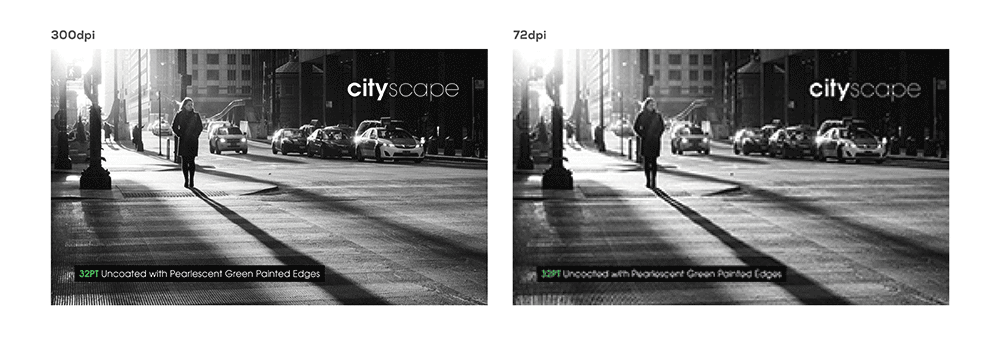
As you can see, high-resolution images play a crucial role when printing products that provide an image in the design. If you receive a resolution warning when uploading your files, please send your files to info@primoprint.com. One of our file processors will be able to check the files and let you know if higher resolution images need to be provided.
